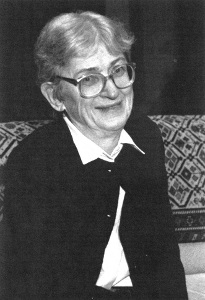Top Qs
Timeline
Chat
Perspective
Helene J. Kantor
American archaeologist From Wikipedia, the free encyclopedia
Remove ads
Helene J. Kantor (July 15, 1919 – January 13, 1993) was a Near Eastern Archaeologist and Art Historian in the Near Eastern Languages and Civilizations of the Oriental Institute at the University of Chicago, best known for her work at Chogha Mish from 1961 through 1978.[1]
Remove ads
Early life and education
Kantor was born in Chicago in 1919 with congenital myopathy, a rare muscular disease that limited her activity and eventually ended her career. Her father was psychologist Jacob Robert Kantor. She attended Indiana University Bloomington and received a B.A. in Zoology and Biology at the age of 19. She earned her Ph.D. in 1945 from the University of Chicago.[1]
Research career
In 1944, while still a student at the University of Chicago, she published an article entitled "The Final Phase of Predynastic Culture, Gerzean or Semainean" in the Journal of Near Eastern Studies. Her most noted work, The Aegean and the Orient in the Second Millennium B.C., was published in 1947.[2]
Kantor retired as Professor Emeritus of Archaeology at the University of Chicago.[when?] Aside from her primary work at Chogha Mish, she saved the site of nearby Chogha Bonut from destruction by modern development and conducted two seasons of investigation there in 1976/77 and 1977/78.[3]
Remove ads
Awards and honors
- In 1984, Kantor received the Israel Museum's Percia Schimmel Archeological Prize for her lifetime achievements.
- In 2004, the Archaeological Institute of America established the Helene J. Kantor Memorial Lecture.[4]
References
External links
Wikiwand - on
Seamless Wikipedia browsing. On steroids.
Remove ads

